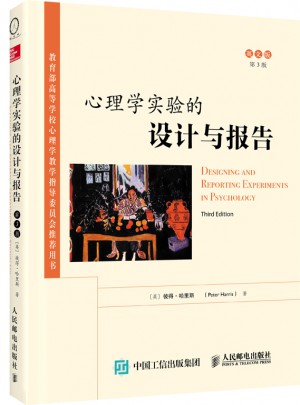Contents of the Web site
Preface
To students
How to use this book
To tutors
Part 1 Writing reports
1 Getting started
1.1 Experienced students, inexperienced students,
and the report
1.2 Writing the report
1.3 The importance of references in text
1.4 The practical report and the research paper
1.5 Finding references for your INTRODUCTION
1.5.1 How to structure your reading and what
to look for
1.5.2 Generating potential references
1.5.3 Locating the references
1.5.4 Rubbish and temptation on the Internet
1.6 Ethics
1.7 The rest of the book and the book's Web site
2 The INTRODUCTION section
2.1 The first part of the INTRODUCTION: reviewing the
background to your study
2.2 Inexperienced students, experienced students,
and the INTRODUCTION
2.3 Your own study
3 The METHOD section
3.1 The DESIGN subsection
3.2 The PARTICIPANTS subsection
3.3 The APPARATUS or MATERIALS subsection
3.4 The PROCEDURE subsection
3.5 Interacting with and instructing participants
3.6 Optional additional subsections of the METHOD
3.6.1 Pilot test
3.6.2 Ethical issues
3.6.3 Statistical power
3.7 Writing a METHOD when your study is not
an experiment
4 The RESULTS section
4.1 Describing the data: descriptive statistics
4.2 Analysing the data: inferential statistics
4.3 An example RESULTS section
4.4 Nine tips to help you avoid common mistakes in
your RESULTS section
4.5 Rejecting or not rejecting the null hypothesis
4.6 Reporting specific statistics
4.6.1 Chi-square, Z2
4.6.2 Spearman rank correlation coefficient (rho), rs
4.6.3 Pearson's product moment correlation
coefficient, r
4.6.4 Mann-Whitney U test, U
4.6.5 Wilcoxon's Matched-Pairs Signed-Ranks Test, T
4.6.6 Kruskal-Wallis one-way analysis of variance, H
4.6.7 Friedman's ANOVA, ;(2r
4.6.8 The independent t test, t
4.6.9 The related t test, t
4.6.10 Analysis of variance (ANOVA), F
4.6.11 Four tips to help you avoid common mistakes
when reporting ANOVA
4.6.12 Linear regression
4.6.13 Statistics of effect size
4.7 What you can find on the book's Web site
4.8 What you can find in the statistics textbooks
paired with this book
5 The DISCUSSION section
5.1 How well do the findings fit the predictions?
5.2 What do the findings mean?
5.3 What are the implications of these findings?
5.4 What to do when you have been unable to
analyse your data properly
5.5 External validity: the generalizability of findings
5.6 Six tips to help you to avoid some common
failings in the DISCUSSION
5.7 Two example DISCUSSION sections
5.7.1 The cheese and nightmare experiment
5.7.2 The mnemonic experiment
5.8 Writing a DISCUSSION when your study is not
an experiment
6 The TITLE and ABSTRACT
6.1 The TITLE
6.2 The ABSTRACT
7 REFERENCES and APPENDICES
7.1 The REFERENCES section
7.2 General rules for the REVERENCES section
7.3 An example REFERENCES section
7.4 Key to the example REFERENCES section
7.5 Electronic references
7.5.1 Published material obtained electronically
7.5.2 Unpublished material obtained electronically
7.6 Appendices
8 Producing the final version of the report
8.1 Writing style
8.2 Definitions and abbreviations
8.3 References in the text
8.3.1 Using et al. properly
8.3.2 Quotations and plagiarism
8.4 Tables and figures
8.5 Graphing data
8.5.1 One IV with two levels
8.5.2 Error bars
8.5.3 One IV with more than two levels
8.5.4 More than one IV
8.5.5 Tips to help you produce better graphs
8.6 Drafting the report
8.7 Producing the final version
Check list for report writing
What the marker is looking for
Mistakes to avoid
Part 2 Design and statistics
9 Experiments, correlation and description
9.1 Experimenting
9.1.1 The experiment
9.1.2 Experimental and control conditions
9.1.3 Control: eliminating confounding variables
9.1.4 Experimental and null hypotheses
9.1.5 More on controlling variables
9.2 Correlation
9.3 Description
Consolidating your learning
10 Basic experimental design
10.1 Unrelated and related samples independent
variables
10.2 Other names for unrelated and related samples
independent variables
10.3 Deciding whether to use related or unrelated
samples
10.4 Related samples
10.4.1 Advantages
10.4.2 Disadvantages
10.4.3 Controlling for order effects
10.5 Principal alternatives to related samples
10.6 Unrelated samples
10.6.1 Advantages
10.6.2 Disadvantages
10.6.3 Ways around these disadvantages
10.7 Matching participants
10.8 External validity
10.9 Internal validity
10.10 Ethics: The self-esteem and well-being of
your participants
10.10.1 Informed consent
10.10.2 Debriefing your participants
10.10.3 Studies on the Internet
10.10.4 Data confidentiality
Consolidating your learning
11 Statistics: significance testing
11.1 Inferential statistics
11.2 Testing for statistical significance
11.3 Type I and type II errors
11.4 Choosing a stati










